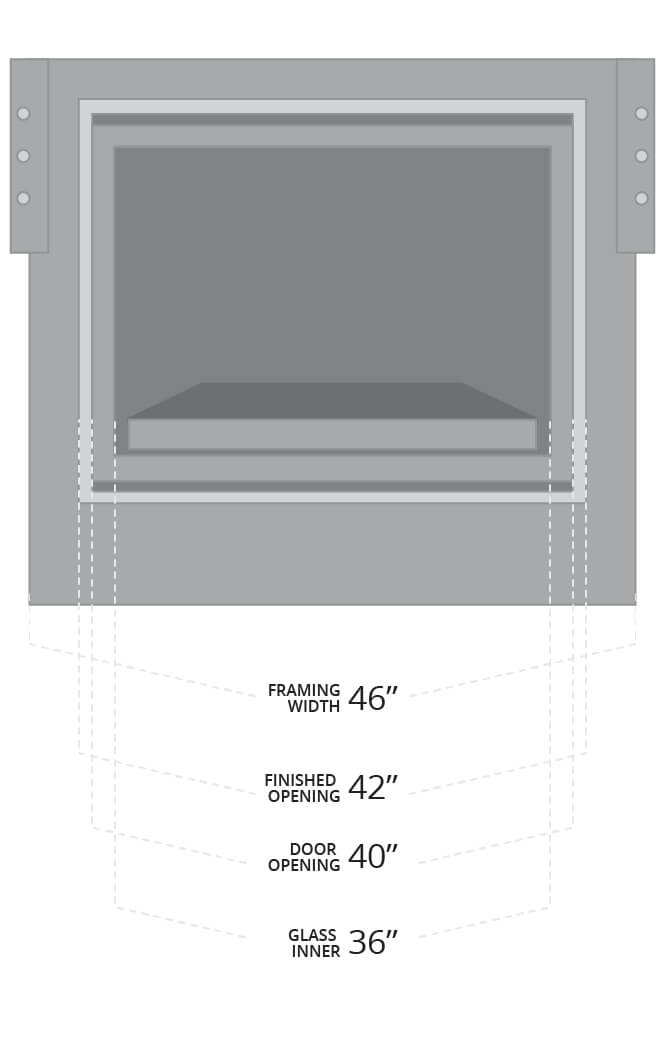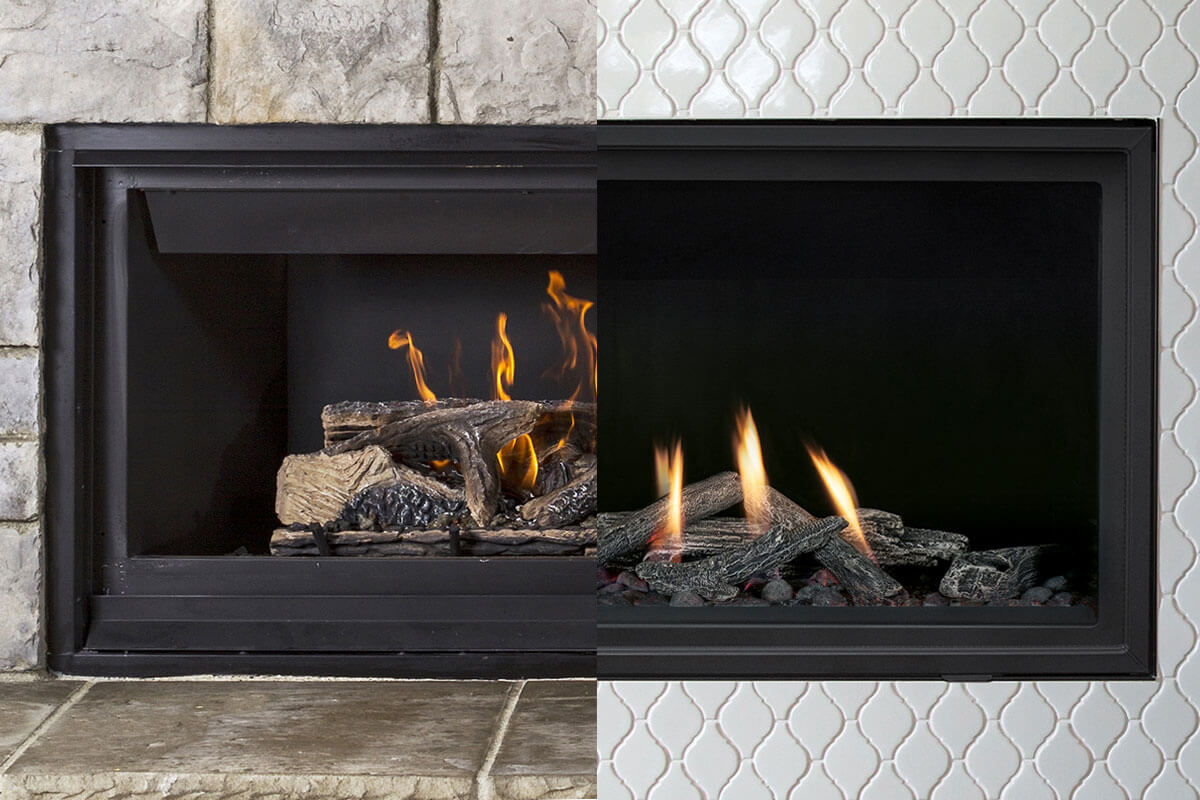The Problem with Non-Standardized Fireplace Sizes
The problem with current fireplace industry sizing is that there is no standardization from one manufacturer to another. So, how can a consumer compare apples to apples when shopping the market for a new fireplace?
Imagine buying a TV advertised as 60-inches. You excitedly unbox it at home only to discover that it has an 8-inch deep frame that brings the actual viewing area down to 52-inches. How disappointing. This situation would never fly in the audio visual industry, but unfortunately it’s fairly common in the fireplace industry.
Manufacturers, intentionally or not, use terminology and dimensions that make it hard to compare accurately with other fireplaces on the market. This lack of industry standard sizing frequently leads to buyer confusion and frustration.
Lets take a look at all the different ways fireplaces can be measured, and define what each of these measurements really mean.
The Many Ways to Measure a Fireplace
Fireplace Series Name or Model Number
It is very common for a manufacturer to use a number in the name or model number of a fireplace to designate its size within the series. Think Flameco Ignite 34, Ignite 38, and Ignite 42. It is important to note that since these numbers have zero standardization in the fireplace industry. The number might have nothing to do with how big the actual opening of the fireplace is.
Names and model numbers can correlate to door width, burner width, and even framing width. So a buyer could run into a case where they are comparing two fireplaces with 38 in the series name. Even though they are vastly different sizes where it matters – the viewing area.
Now let’s take a closer look at all the ways a fireplace size can be measured and where those non-standardized fireplace sizes come from.

Framing Width
This is a case where bigger is not better. Fireplaces with larger bodies when compared to the opening is becoming more popular with the industry. Efforts to create zero clearance and high efficiency units drive this trend.
Bigger framing widths can hamper chase sizes, as well as push corner installations further into the room. When used in the model name or number, it also gives the illusion that a fireplace is bigger than it actually is.
Finished Opening
The area where you can bring a finishing material up to is often referred to as the finished opening. While this will be the final visual edge of the fireplace on the wall, it should hardly be thought of as the best go-to dimension.
Taking up space on the wall with a wide finishing flange and screen can create an unappealing juxtaposition when paired with an undersized burning display area.
Door Opening
Sizing that uses the door opening can be misleading for a number of reasons. The measurement can be taken from the outer edge of the door, or the inner edge where the glass visually starts.
Glass Inner
Also known as the viewing area of a fireplace, measuring from the glass inner area ensures that sizing correlates to the part of the fireplace that matters most to the buyer.
Additional Considerations
Now that we are measuring at the inner edge of the door, that’s the real dimension, right? Not so fast! We also have to consider that burners are often raised within the firebox, which can reduce the fire display. Burner widths can be tricky to find and they frequently stop well short of the media tray edge. There are also things like inner frames, grates, louvers, and safety screen frames to account for.
The good news is that once you match door inner measurements, a visual comparison is easy to make. Once you select two fireplaces with similar glass inner measurements, you can visually compare them to ensure the finished opening and actual viewing area looks the way you desire.
Final Decisions
Best practice is to decide on a fireplace purchase based on what you will see once the unit is fully installed in your home. Fireplace images online and in brochures are frequently touched up, so visit a showroom and look at finished burning models before making a final decision. That way, you can be sure you are getting both the size and the finished look of your fireplace dreams!
Shopping Tips:
- Don’t assume the model number is a true measurement of the fireplace size
- Dimensions like framing width and finished opening can be more misleading than informative
- Compare models with similar glass inner measurements for true size comparison
- Then compare finished viewing areas to select the look you want
A Word on Montigo Standard Fireplace Sizing
Here at Montigo, our fireplaces are always engineered with the finished look in mind, so we take visual appeal into account with every design decision.
We make every effort to keep the viewing area clear of louvers, thick door frames, and other busy distractions. Safety screens, where required, are designed with the narrowest frame possible so as not to obstruct the view. So at the end of the day you are left with a fireplace that is the perfect balance of engineering and beauty. No matter what size you choose.
Ready to visit a showroom near you?
